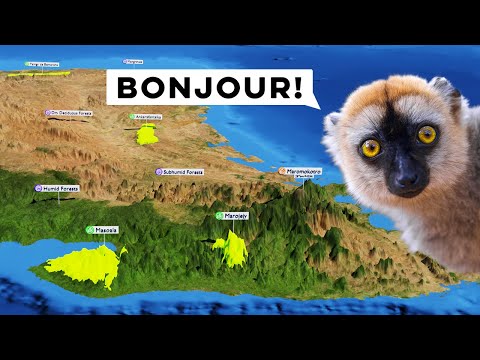
Madagascar, the fourth largest island in the world, located off the southeastern coast of Africa, is a haven for wildlife enthusiasts. Often referred to as the “eighth continent” due to its exceptional biodiversity and unique wildlife, over 90% of its flora and fauna are found nowhere else on Earth. From the iconic Baobab trees to the enigmatic lemurs, Madagascar offers a surreal encounter with nature at its most unique.
### Discovering Lemurs
Lemurs are perhaps what Madagascar is most famous for. These charismatic creatures come in various shapes and sizes, from the tiny mouse lemur to the sifaka known for its ‘dancing’ mode of movement. The best places to see lemurs include:
– **Ranomafana National Park**: Home to 12 lemur species including the critically endangered golden bamboo lemur.
– **Andasibe-Mantadia National Park**: Just a short drive from Antananarivo (the capital), it’s an ideal spot for seeing the indri, the largest living lemur.
– **Berenty Reserve**: Known for its population of ring-tailed lemurs and sifakas.
### Birdwatching Paradises
With over 300 bird species, of which more than 60% are endemic, Madagascar is a birdwatcher’s paradise. Key birdwatching spots include:
– **Masoala National Park**: Offers sightings of rare species such as the helmet vanga.
– **Zombitse-Vohibasia National Park**: A transition zone between dry and humid forests, home to Appert’s tetraka and other endemic species.
### Exploring Unique Flora
Madagascar’s unique vegetation includes over 12,000 plant species. The Avenue of Baobabs is an iconic landmark with majestic Baobab trees lining up along a dirt road – a sight that leaves many in awe. For botanical enthusiasts:
– **Spiny Forests of Ifaty**: These offer a surreal landscape filled with spiny plants adapted to extreme drought conditions.
– **Tsingy de Bemaraha Reserve**: Not only known for its limestone karsts but also for harboring diverse plant life.
### Fascinating Reptiles and Amphibians
Herpetology fans will find Madagascar tremendously rewarding due to its variety of reptiles and amphibians – almost all endemic. The bizarre-looking satanic leaf-tailed gecko or colorful chameleons like the panther chameleon are notable highlights:
– **Ankarana Special Reserve**: Known for its dense populations of reptiles.
– **Amber Mountain National Park**: A cool rainforest habitat with numerous species of chameleons.
### Conservation Efforts
While exploring Madagascar’s wildlife, it’s essential to recognize conservation challenges such as habitat destruction due to logging and agriculture. Many parks work closely with local communities and researchers to promote sustainable tourism that benefits both conservation efforts and economic development.
### Practical Tips for Visiting
1. **Best Time to Visit**: April through December when rainfall is less frequent.
2. **Getting Around**: Renting a car with a driver or joining organized tours since many natural sites are remote and difficult to access.
3. **Accommodations** range from eco-lodges within parks to hotels in nearby towns.
4. **Respect Local Guidelines** on interacting with wildlife especially guidelines regarding flash photography around nocturnal animals.
Madagascar offers an unparallelled opportunity not just to observe rare wildlife but also immerse oneself in an ecosystem unlike any other on Earth. Whether it’s watching lemurs leap through canopies or exploring vast landscapes dotted with baobabs, this island promises profound encounters that resonate long after you return home.
In crafting your adventure in this magnificent land remember that your presence has impacts; choosing responsible travel options helps ensure that future generations can also experience these wonders first-hand. Welcome aboard on your journey into wild Madagascar – where every path leads into another realm!
